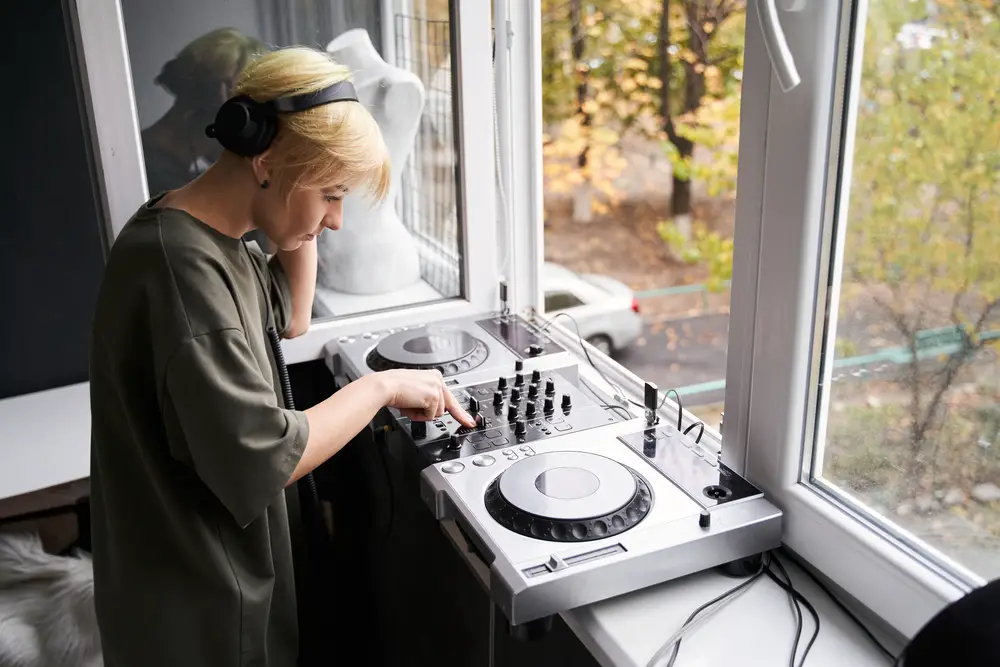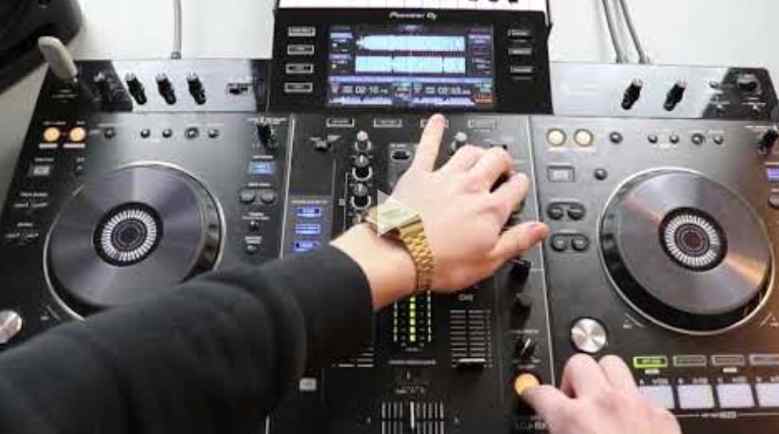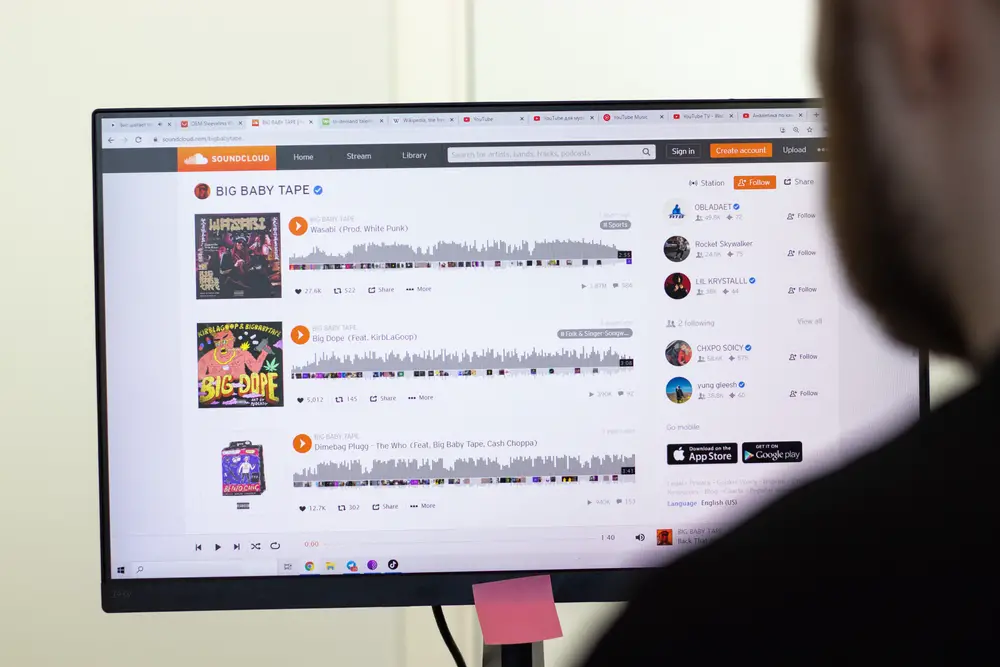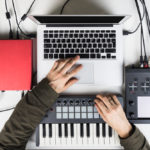It is undeniable that Dubstep has been at the forefront of musical evolution over the last ten years, stomping its heavy, pulsating foot into an industry that has been guilty in the past of obsessing over softer, radio-friendly tones.
The beauty of this music lies in its unpredictability. Although everyone is waiting for the all-important ‘drop,’ there is an irregularity to Dubstep that differs from other forms of electronic music.
It keeps the genre fresh, keeps listeners (and dancers) on their toes, and pushes sonic boundaries, but it’s this same glitched-out originality that makes it such a tricky genre for DJs to mix.
Not to worry, though. As long as you’ve got the energy to match this sporadic and spirited music, you’ll be capable of mixing it like an absolute master. Here are some pointers to get you started.

Is Mixing Dubstep Hard?
Dubstep tends to have unique structural elements that aren’t exactly DJ-kind, so it can be tricky to mix. For example, Dubstep rarely has a house-style beat intro.
You’re far more likely to hear some sub and sound design before anything akin to a consistent beat is established, which can make beatmatching a piece of music from the top incredibly difficult.
But this genre’s inability to play nicely with more traditional strains of EDM is actually one of the most exciting things for DJs.
Sure, it won’t slide smoothly into your typical 4-on-the-floor transition, but that also means it’s not confined to the rules that other more clear-cut tracks live by.
With Dubstep, you don’t have to mix the beginning of track B into the end of track A. The music is so dynamic that there are plenty of opportunities to do some truly jaw-dropping mid-track mixing.
The trick is to lean into the quirks of this incendiary genre and learn how to work it into your set in creative ways.
Familiarize Yourself With Structural Aspects Of Dubstep
As you well know, Dubstep (especially modern variants) can be a little unpredictable — it’s why we love it! But this means we can never really take anything about the track as a given.
Just like a concert pianist will study the works of Vivaldi and Bach before they head to the auditorium for a show, you must learn the work of the composers relevant to your set genres.
I know it can be difficult to study such a visceral genre that focuses primarily on the feeling rather than traditional aspects of electronic composition. Still, the more you engage with Dubstep, the more you will understand those “feelings” and learn to anticipate what’s coming in the music.
What you’ll find is that, even at the peak of Dubstep’s irregularity, it’s a very guiding genre. In other words, it’s always giving hints to the listener as to where the track is going — how else would 10,000+ people at a festival all know precisely when the drop’s about to hit?
If you can tap into these auditory clues, you’ll begin seeing various openings that would work as transition cues.
Analyze The Wave Structures Of Any Tracks You Plan On Mixing
Once you have a general idea where two Dubstep tracks could potentially blend smoothly, it’s time to get down to the nitty-gritty, check out those wave structures, and set some hot cues.
As there are so many rises and drops in Dubstep, you must connect two tracks at a logical point.
The Basics — BPM And Key
No matter the genre, to mix any track with another, you first need to get them running at the exact BPM. Otherwise, even if you manage to match the beats initially, they’ll immediately fall out of phase, leaving you looking on at a dance floor full of dissatisfied faces — no thanks!
You also need the two tracks to be in the same or complementary keys. If the keys don’t blend harmonically, the result will be a-tonal chaos, the likes of which will get you banned from playing the venue ever again.
Having said that, if you’re mixing tracks purely for rhythms, you don’t need to worry so much about harmony.
Trade In The Kick For The Snare
The story of Dubstep’s formation as a genre is essentially made up of people saying… “You know what this track needs? LOTS MORE BASS”. And, as happy as I am that this is how the music turned out, it can make beatmatching an absolute nightmare.
The problem is that the bass of track A is so omnipresent and saturated that you cannot for the life of you hear the bass of track B, which is what you need to do to line the songs up and mix them into one another, but it’s not impossible — there is a trick!
When you’ve got bass blaring through both your monitor and headphones, you need to forget about the bass altogether. I know, I know… it sounds like set suicide, but, trust me, it works.
Now, you’re not going to ignore everything and let the tracks completely run amok. The trick is to focus on the snare or whatever noise comes in with that snappy treble hit.
That’s going to be your beatmatching marker. The rest of the music is so bass-heavy that the snare hits stand out like a big old sore thumb.
By listening to the snare, you’ll start to realize that this seemingly randomized music actually has a very clean-cut structure — usually a typical 4/4 beat. Once you hear it and you’re feeling the rhythm, you’ve got the green light to beat match as you usually would.
Time Out How Long You’re Going To Play Each Track
Don’t get me wrong; it’s perfectly okay if you like to include some sort of improvisational aspect to your performances by not thoroughly planning everything out. Still, many great Dubstep DJs prefer a more structured approach to their mixing.
Typically speaking, they’ll allocate a minute to a minute and a half to each track they play, as it…
- Keeps the energy of the evening electric.
- Prevents ear fatigue.
- Increases the chances you’ll play more people’s favorite tracks.
- Gives you an idea of where you are in the set.
Dubstep Mixing Techniques
Now let’s check out a few specific methods for mixing Dubstep.
During The Build-Up Of A Drop In Track A
I’m a big fan of this mixing technique. It involves letting track A hit one drop as usual, then gently bringing in track B during the build-up towards the next one.
The melodic aspect of the second track adds to the intensity of the build, helping to get the crowd pumped up, then, just before the second drop in track A is about to hit, in one quick motion, take track A completely out of the mix.
I know removing a drop sounds like the cardinal sin of Dubstep DJing, but if anything, it allows more time to build the tension while keeping everything sonically intriguing. Then, once the first drop in track B hits, the place bounces beyond belief.
During The Outro Of A Drop In Track A
Another common way to mix Dubstep music is to use the outro of a drop in track A. Outros usually mean the end of a song, and it’s our job to completely do away with “ends” and keep the party going with seamless transitions, so it’s an ideal place to bring in a new track.
As track A starts to fizzle out, simply fade in track B and fade out track A, letting the dance floor know that it’s not time to sit down or head to the bar for another drink just yet.
Drop Mixing
Possibly the most popular and impactful way to mix Dubstep of all is drop mixing, which is exactly what it sounds like. You wait for a drop in track A to come along, then just as it’s about to hit, invert the channel faders, so an unexpected super drop strikes the crowd.
It’s the kind of musical “aha moment” that will have everyone on the floor turning to each other and screaming “YES.”
As with most forms of mixing, to prepare for some sick drop mixing, you need to set your hot cues, but don’t just set track B’s cue as the moment before the drop. It should actually be a little further back, so you have time to beat match the tracks.
Once you’ve checked everything is in sync, it’s just a matter of timing. You need to invert the faders in a single swift motion, giving you that immaculately clean cut between tracks A and B.
But don’t just forget about track A once you’ve successfully transitioned to your secondary jog. Use the channel fader in a quick rhythmic fashion (kind of like how you’d use the crossfader for scratching) to add some powerful accents to your newly established beat.
What If I Wanted To Mix Some House Into A Dubstep Track Or Vice Versa?
If you’re a mobile DJ, and you’re playing a lot of different sorts of gigs, you’ll no doubt be asked at some point to play Dubstep when you’re supposed to be playing House or House when you’re supposed to be playing Dubstep.
Of course, you’re well within your right to tell everyone to back the flip-up and enjoy the music you have planned out, but if you want to appease the crowd, there are ways to mix these two seemingly different genres to great effect artfully.
The trick is to use a Dubstep track that has some form of slightly less intense passage. Listen for that snare hit in this passage, match it to the beat of your house tune, then fade track B in. This way, you’ll introduce the new genre without taking too much energy out of the room.
If you’re doing things the other way around, or you simply need to return to playing Dubstep to keep the energy levels up, you should use a technique similar to drop mixing.
It’s not quite the same thing, as our house tune doesn’t have a drop to exchange, but it essentially follows the same rules.
Start counting out the beat, and just as the drop is about to hit on your Dubstep track, invert the faders — the audience won’t know what hit ’em.
To make the transition between the house tune and the Dubstep drop seem less jagged, you can always throw in a sudden jog spin before hitting the faders to act as a transition buffer.
Where Do DJs Get Their Music?
Dubstep DJs select their music from a variety of places. The most popular are Beatport.com and Bandcamp.com. Both of these websites allow digital WAV file downloads. Bandcamp is the best digital retailer to support the artist as they take a lesser revenue cut.
iTunes is also favorable as it allows for physical downloads. However, most Dubstep and Electronic DJs will be signed up to Bandcamp as the website has a solid Electronic community. You can showcase your work to new audiences more easily than on other platforms by utilizing hashtags and genre searches.
We hope you love the products we recommend. We may collect a commission if you purchase through one of our links. This doesn't cost you anything extra. If you do, thank you! As an Amazon Associate, I earn from qualifying purchases.







